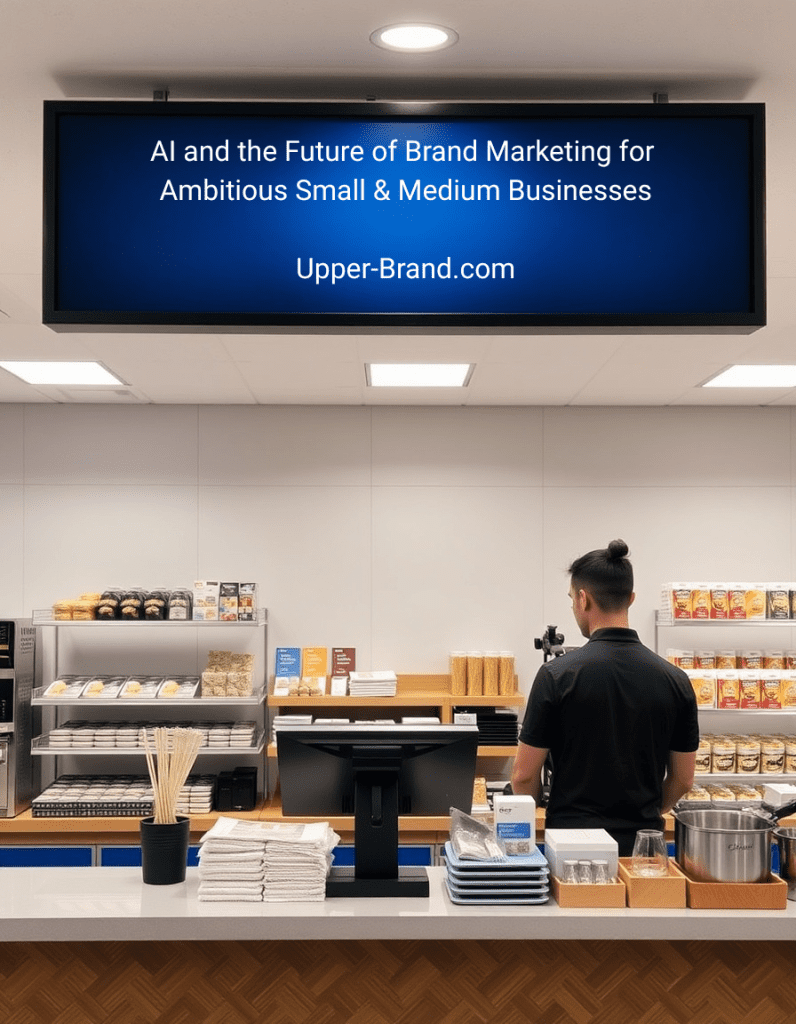Elevating Search: Google’s AI Now Incorporates Advertising

Introduction: A Vision of Search Reimagined
Search has never been static. Every leap in technology, from the rise of mobile browsing to voice assistants, has redefined how consumers discover information and brands connect with them. Now, with Google embedding ads into AI-powered search, we are entering a new chapter. This is not just about monetization. It is about transforming the very framework of discovery, blending AI-driven insight with commercial opportunity in ways that redefine marketing strategy.
The Integration: AI Meets Advertising
In May 2025, Google expanded its AI Overviews to feature ads seamlessly within AI-generated summaries. At the same time, AI Mode, which enables conversational, multi-step searches, began displaying ads woven directly into the dialogue. This is no longer about reacting to single keywords. Instead, ad placements are based on contextual signals, intent, and the rhythm of user interaction.
This shift repositions advertising from being adjacent to the search experience to being embedded within it. The future of search is not about scrolling through results, it is about engaging in conversations where recommendations, insights, and advertisements merge into one fluid experience.
Opportunities for Brands: Being Present at the Spark of Curiosity
Visibility Earlier in the Journey
Consumers no longer wait until they are ready to purchase before encountering your brand. With AI-driven advertising, your message can now appear at the moment of curiosity, when the user is still exploring, asking, and forming intent. A query like “how can I launch an online store with minimal budget” may surface AI guidance that also features ads from platforms or agencies ready to help.
Authority as the New Currency
AI favors signals of expertise. Brands that have invested in educational content, tutorials, and thought leadership will naturally align with AI’s contextual framework. The implication is visionary: marketing is no longer just about visibility, it is about credibility being recognized by an algorithm that acts as both guide and gatekeeper.
Top-of-Funnel Engagement Reinvented
Early benchmarks suggest that impressions within AI environments rival or even outperform traditional search formats for awareness. This creates a fresh canvas for marketers to reach audiences who are not yet searching with transactional intent but are shaping their decision pathways. For brands able to align messaging with these moments, the upside is immense.
The Challenges: Declining Clicks, Rising Expectations
The Era of Zero Click Searches
The most striking data point is the decline in click-through rates. Studies indicate that position one search results lose between 15 and 35 percent of clicks when AI Overviews are present. Organic informational queries can see CTR drops of up to 70 percent, while paid ads lose nearly half their click volume when paired with AI summaries.
Users are satisfied with answers at the search stage itself. They are engaging less with external sites and more with Google’s AI as the primary destination. For marketers, this signals a profound pivot: visibility alone is no longer enough. Impact must be measured by presence and resonance within the AI dialogue itself.
Transparency and Measurement Limitations
Advertisers face the challenge of limited control. With ads appearing dynamically within AI responses, brands cannot always dictate placement or context. Add to that minimal reporting from Google on ad delivery, and performance measurement becomes murky. The future of marketing analytics must evolve to include new metrics that capture brand exposure within AI ecosystems.
The Canadian Market: A Critical Moment of Adoption
In Canada, only 27 percent of small and medium businesses report using AI tools today. As this rollout expands from the United States, Canadian enterprises face both urgency and opportunity. The brands that embrace structured data, maintain optimized Google Business Profiles, and invest in localized SEO will gain an edge in visibility. Those who delay risk losing presence in a search landscape where AI defines what users see first.
This is a rare inflection point: a chance for Canadian businesses to leapfrog competitors by preparing for AI-driven advertising before it becomes standard practice.
Strategic Imperatives for Forward-Looking Brands
Prioritize Feed Hygiene
Accurate, structured product feeds are now essential. AI draws heavily on data integrity, meaning incomplete or outdated information can exclude brands from appearing in AI-driven results.
Elevate Content into Thought Leadership
Brands must look beyond basic SEO. White papers, guides, and authority-driven resources will increasingly influence whether AI recognizes a company as a trusted voice. This is not simply about ranking, it is about being validated by AI as a source of knowledge.
Double Down on Local SEO
Local queries remain more resilient to AI disruption. Optimized Google Business Profiles, community-focused content, and direct engagement with local audiences will continue to matter.
Redefine Metrics for Success
Click-through rates and cost per click no longer tell the full story. The new era demands measurement of brand impressions within AI answers, visibility across conversation-driven contexts, and overall resonance within the AI-powered discovery journey.
Diversify Marketing Portfolios
Brands must avoid over-reliance on Google. Social platforms, community-driven campaigns, and alternative channels are vital complements in an ecosystem where Google increasingly controls the flow of engagement. Diversification ensures resilience in a marketplace redefined by AI.
Looking Ahead: The Marketing Landscape Recast
The integration of advertising into AI search is more than an incremental step. It is a visionary signal of where discovery and commerce are heading. Search is no longer about presenting options, it is about curating experiences. The AI itself becomes the environment where consumers learn, compare, and decide, with brands positioned directly within that narrative.
For marketers, this requires boldness. It requires shifting focus from transactional clicks to contextual presence, from isolated campaigns to integrated conversations. The brands that thrive will be those that anticipate not just where users search, but how they experience discovery in an AI-first world.
Seizing the AI-Driven Horizon
Google’s decision to incorporate advertising within AI-powered search crystallizes a trend that marketers have long anticipated: the convergence of information, insight, and monetization. For businesses in North America, and especially for forward-thinking Canadian brands, this is not a distant future. It is here.
The path forward is clear. Build authority, invest in data integrity, and measure impact in new ways. Marketing in the age of AI search is not about keeping pace with change, it is about envisioning the next horizon and seizing it. In this new era, presence is power, and brands that adapt will not just be discovered, they will define the future of discovery itself.










